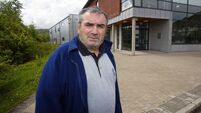Action urged on limiting urban sprawl
Among the actions prioritised are the redirection of industrial investment from Dublin to other regions and the diversion of traffic out of Dublin Port to other ports on the east and south east coasts.
An immediate and comprehensive audit of all vacant, derelict and underused land in the urban area is also called for to identify existing sites for housing and other suitable developments without encroaching on green-field sites.












